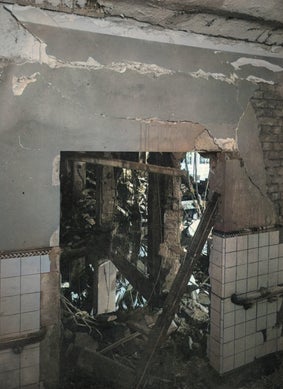Art Deco in London
Charles Holden's Masterpiece
Charles Holden created the 174-foot-tall Art Deco office structure 55 Broadway, which was constructed between 1927 and 1929.
It was ornamented with elemental sculptures by Eric Gill, Henry Moore, Jacob Epstein, and Eric Aumonier and was a piece of Chicago's Jazz Age.
The phrase "London's first skyscraper" was used to describe it.
...its interior features marble stairways and bronze fixtures...

The structure was built right over the St. James's Park Underground Station (established in 1868 and finished in 1927–1929), and its interior features marble stairways and bronze fixtures. The St. Ermin's Hotel (1899) on Caxton Street, Petty France, Christ Church Broadway (1843), Wellington Barracks, and Queen Anne's Gate were all visible from its clock tower and roof terrace, which also provided sweeping views of Westminster.
It served as the combined headquarters for the Metropolitan District Railway Company, the London General Omnibus Company, and the London Passenger Transport Board (Underground Electric Railway) in 1940.
55 Broadway in 1940.
The Secret Intelligence Service (SIS), subsequently known as MI6, had offices directly across the street at 54 Broadway (operational from 1926-1964). Dr. R.V. Jones, Churchill's Assistant Director of Intelligence and MI6's senior scientific advisor, later supervised deception efforts in the V-Weapons campaign from June 1944 to March 1945 and developed countermeasures to interfere with German bomber radio navigation aids from this address.
On October 14, 1940, a high explosive bomb struck 55 Broadway directly. Records kept by the London Passenger Transport Board show that: “The bomb penetrated a small section of roof of the West Wing on the 9th floor, passing through successive floors down to the 5th floor, where it struck a steel girder and exploded” (LPTB meeting minute 2295, Appendix 19, 7 November 1940, courtesy TfL Archives).
A significant portion of the upper West Wing was destroyed by a fire that broke out. London Transport employees were not hurt, but the building's Portland Stone exterior and some interior rooms sustained significant damage.

Air-raid damage to the interior of 55 Broadway. Here, a narrow, vertical crater has formed in an interior wall, allowing a staircase to be glimpsed beyond. There has also been some damage to the floor and ceiling, and a pane of glass had been smashed (extreme right).
Topical Press / https://www.ltmuseum.co.uk/

Debris fell into Broadway as one story level slid below. On the morning of October 16, photographers from the Topical Press Agency captured images of damaged offices that were left outside.
Emergency repairs were performed to 55 Broadway following the attack, and it continued to serve as the centre for strategic and operational management for London Transport.
On May 10-11, 1941, explosives were dropped on and around the building, causing damage to the east entrance as well. On Petty France, a second bomb destroyed nearby offices.
Air-raid damage to the interior of 55 Broadway.
Topical Press / https://www.ltmuseum.co.uk/
A map showing bomb strikes in the area.




Topical Press / https://www.ltmuseum.co.uk/
Aftermath
Contractors Holland & Cubitts Ltd and Rubery Owen & Co Ltd then successfully undertook extensive repair work on the damaged West Wing part, leaving no evidence of the wartime damage today. This iconic building in Westminster still serves as the Head Office of London Underground Limited, which was founded in 1985.
It also has a bustling ground floor with shops and cafes.
55 Broadway today.
Paul Farmer
Further reading
Sources:
https://www.ltmuseum.co.uk/collections/collections-online/photographs/item/1998-34825
http://www.westendatwar.org.uk/page/55_broadway_sw1?path=0p28p
Wikipedia
Paul Farmer
Ronan Thomas
Topical Press






